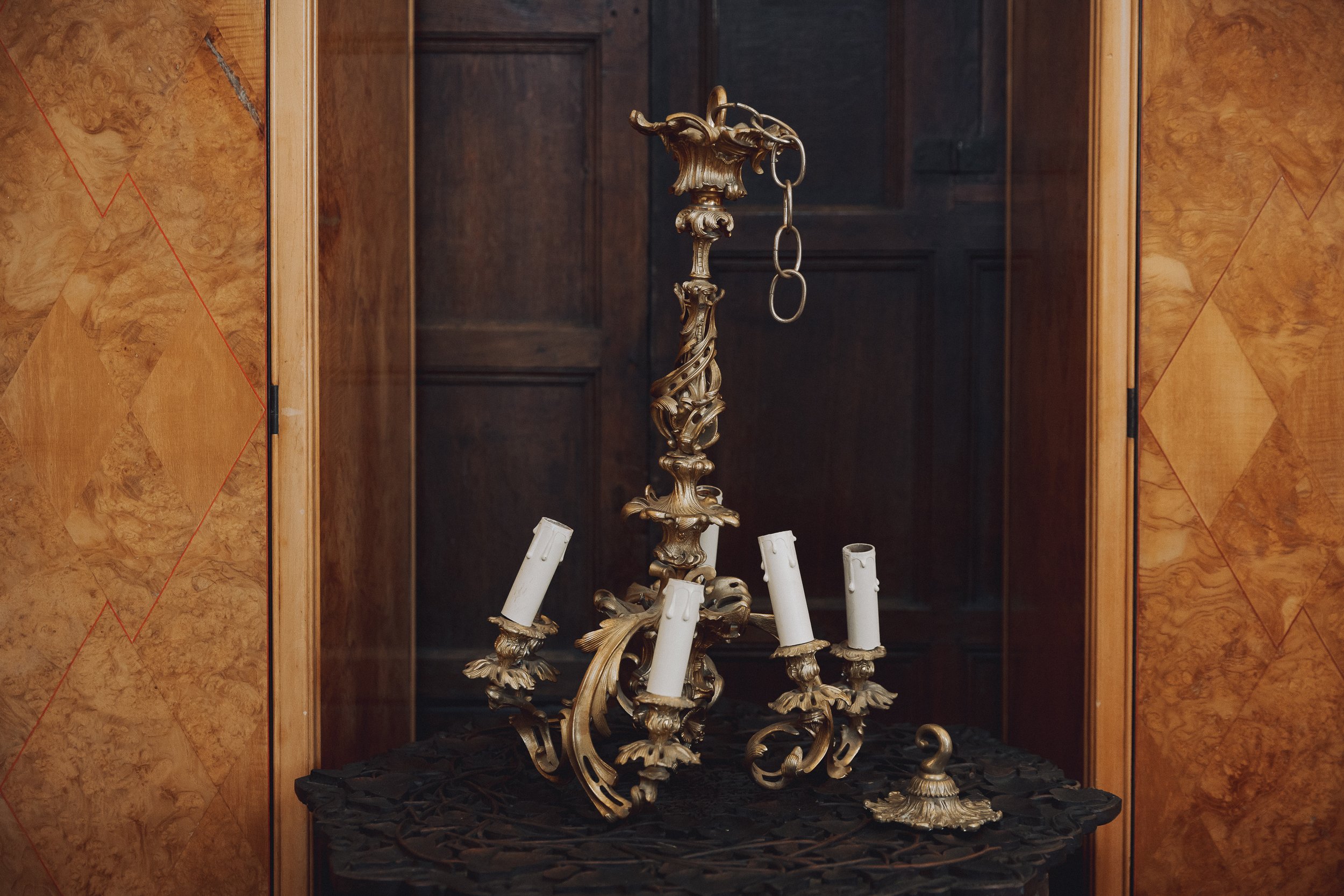This carved oak table in the Antiquarian manner is a wonderful example of a style seen in Britain in the mid-19th century. Blending a gadrooned moulding to the edge of the top that might be drawn from Kentian tables of the mid-18th century with a Daniel Marot inspired column carved with lambrequin, stylised flowers and hanging bellflowers that could have been conceived in the 17th century.
It has no mark, penciled text or label to allows an attribution to a designer or maker of the period. There were a few names working in this Antiquarian style amongst them Anthony Salvin (1799 - 1881), Richard Bridgens (1785 - 1846), Edward Blore (1787 - 1879) and AWN Pugin (1812 - 1852) who with JG Crace worked on the interiors at Chirk Castle in the 1840’s.
However, not one of these designers has overtly used a European motif as we see on this central column; they all tended towards fusing Tudor-Elizabethan with Jacobean and Stuart elements in their furniture and interior architecture. None-the-less a beautifully conceived and made piece of furniture.

Showroom photoshoot January 2024 with www.indiahobson.co.uk
I am incredibly fortunate to have the use of this old coach house to display my collection; the unexpected scale, the gallery hung family portraits over 17th century panelling and the quality of light flowing in through clerestory windows all combine to create an atmosphere of calm and theatre.
Love it or hate it, Instagram’s algorithm has the near perfect ability to introduce us to the most capable creatives in their fields. A few years ago, I was thrown @Haarkon_ as the algorithm fed my perpetual scroll and I followed them. The Social media beast kept throwing their images my way & I liked photo after photo…..mindlessly.
India’s photographs are a small selection from the shoot on a rare day of raking Winter sunlight in the Derbyshire countryside. Her photos give a good overview of my stock-holding; from the 20th century back to the early 17th century.











